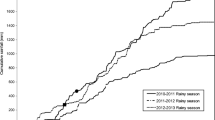Abstract
The novel cultivation of paddy rice in aerobic soil reveals the great potential not only for water-saving agriculture, but also for rice intercropping with legumes and both are important for the development of sustainable agriculture. A two-year field experiment was carried out to investigate the yield advantage of intercropping peanut (Arachis hypogaea L., Zhenyuanza 9102) and rice (Oryza sativa L., Wuyujing 99-15) in aerobic soil, and its effect on soil nitrogen (N) fertility. A pot experiment was also conducted to examine the N2-fixation by peanut and N transfer from peanut to rice at three N fertilizer application rates, i.e., 15, 75 and 150 kg N ha−1 using a 15N isotope dilution method. The results showed that the relative advantage of intercropping, expressed as land equivalent ratio (LER), was 1.41 in 2001 and 1.36 in 2002. Both area-adjusted yield and N content of rice were significantly increased in the intercropping system while those of peanut were not significantly different between intercropping and monocropping systems. The yields of rice grain and peanut, for example, were increased by 29–37% and 4–7% in the intercropping system when compared to the crop grown in the monocropping system. The intercropping advantage was mainly due to the sparing effect of soil inorganic N contributed by the peanut. This result was proved by the higher soil mineral N concentration under peanut monocropping and intercropping than under the rice monocropping system.%Ndfa (nitrogen derived from atmosphere) by peanut was 72.8, 56.5 and 35.4% under monocropping and 76.1, 53.3 and 50.7% under the intercropping system at N fertilizer application rates of 15, 75 and 150 kg ha−1, respectively. The 15N-based estimates of N transfer from peanut (%NTFL) was 12.2, 9.2 and 6.2% at the three N fertilizer application rates. N transferred from peanut accounted for 11.9, 6.4 and 5.5% of the total N accumulated in the rice plants in intercropping at the same three N fertilizer application rates, suggesting that the transferred N from peanut in the intercropping system made a contribution to the N nutrition of rice, especially in low-N soil.
Similar content being viewed by others
Author information
Authors and Affiliations
Rights and permissions
About this article
Cite this article
Chu, G., Shen, Q. & Cao, J. Nitrogen fixation and N transfer from peanut to rice cultivated in aerobic soil in an intercropping system and its effect on soil N fertility. Plant and Soil 263, 17–27 (2004). https://doi.org/10.1023/B:PLSO.0000047722.49160.9e
Issue Date:
DOI: https://doi.org/10.1023/B:PLSO.0000047722.49160.9e




